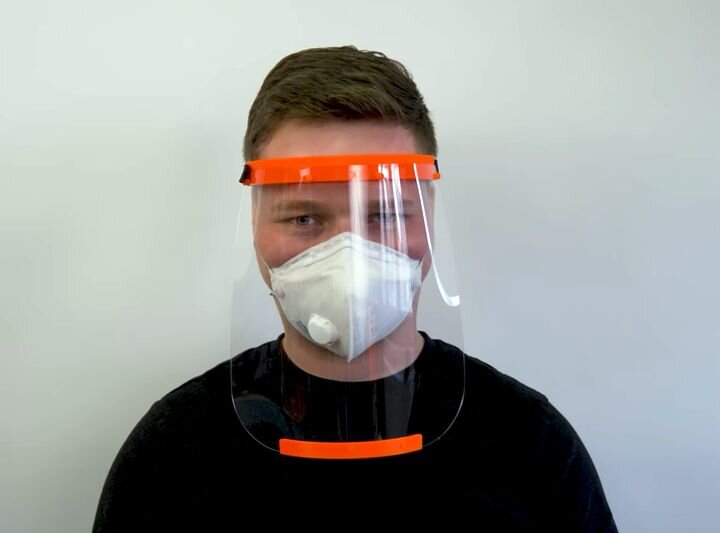A certified DIY medical face shield made with 3D printing [Source: Prusa Research]
This week’s selection is the Prusa Protective Face Shield by Prusa Research.
All week long we’ve been following the efforts of many 3D printing companies as they do their best to not only deal with the crisis, but extend their resources beyond to assist others in the community. One company that has gone far above in this regard is Czechia-based Prusa Research.
As we previously reported, the company has retooled their polymer workshop to produce sanitizer, and they’ve also purchased weeks of free bike sharing for the country of Czechia.
But there’s one thing they’ve done that can extend far beyond Czechia: they have produced a functional design for a medical face shield. This model was approved for use by the Czech health authorities, and is designed for easy production on any 3D printer.
The face shield is one of many types of personal protective equipment (PPE) that medical professionals have been using. In addition to masks and eye protection, the face shield covers the skin of the face from accidental exposure.
I selected this 3D model as Design of the Week because it is not only a proven-useful design, but also because it is a product that many people could successfully produce. While there are now countless projects struggling to produce rudimentary versions of complex devices like ventilators, I expect many of these ventures to fail as participants often don’t know all the many details required to produce a truly practical and safe device.
The face shield is not like that. It is something you can indeed make, and quickly.
The page for the face shield includes copious instructions, including some very interesting advice for bulk manufacturing that are not normal, but entirely necessary today:
-
“Act as if you were infected by the COVID-19 virus. Wear a face mask and a fresh pair of gloves when collecting each batch of printed parts. Store the parts immediately in a sealable bag.
-
Talk with whoever you’re making the shields for, let them know about your manufacturing environment
-
There is still debate about how long the virus survives on plastic, but most sources mention 2-3 days. That means that by letting the packed face shields sit for 2-3 days before distributing them, you’ll greatly reduce risk of transmission
-
Do not store the entire stock in one place, minimize the risk of cross contamination”
There’s even a video on how to produce and assemble the parts, which are recommended to be made with PETG material.
If you are able and your local healthcare authorities are interested, consider making this face shield.
Via PrusaPrinters


![A certified DIY medical face shield made with 3D printing [Source: Prusa Research]](https://fabbaloo.com/wp-content/uploads/2020/05/image-asset_img_5eb067bd016a7.jpg)